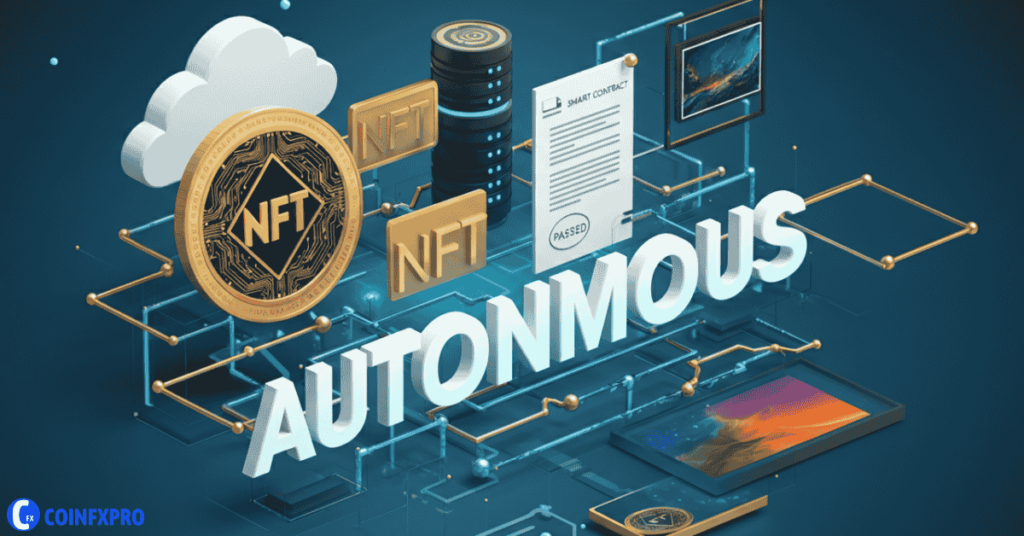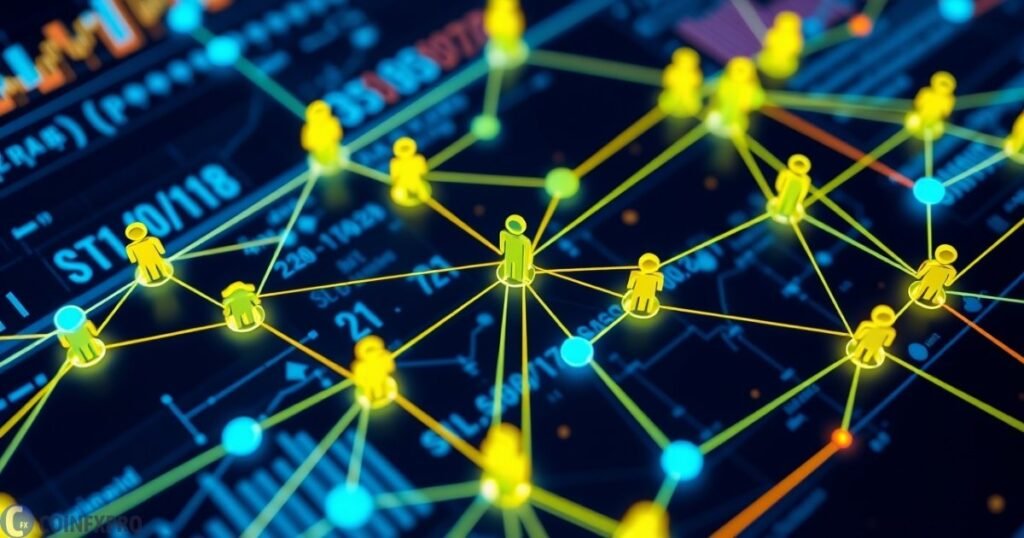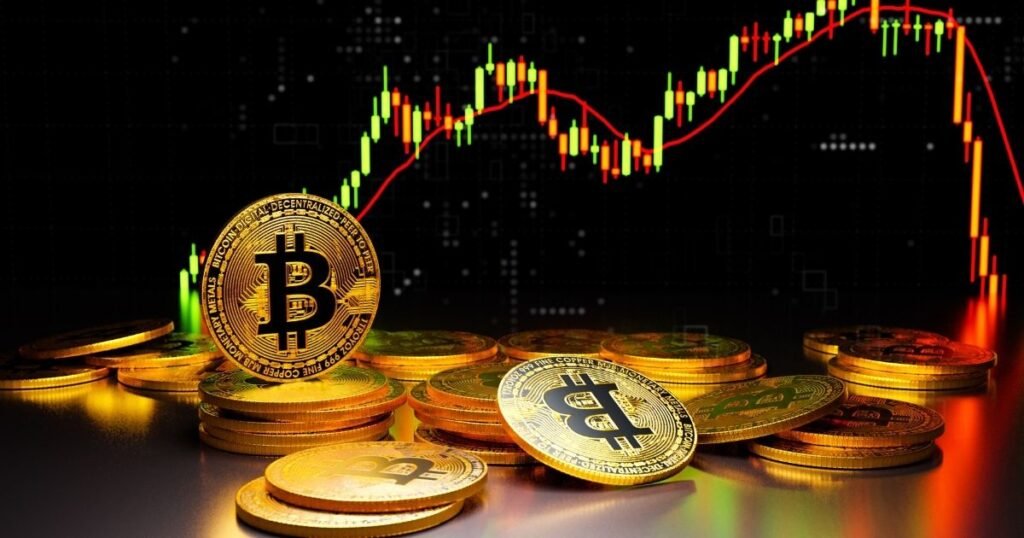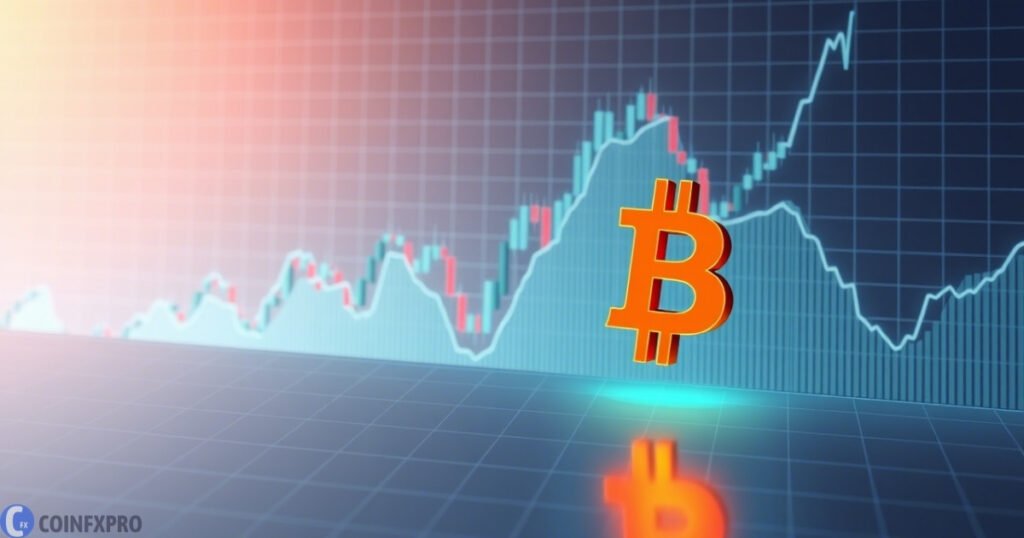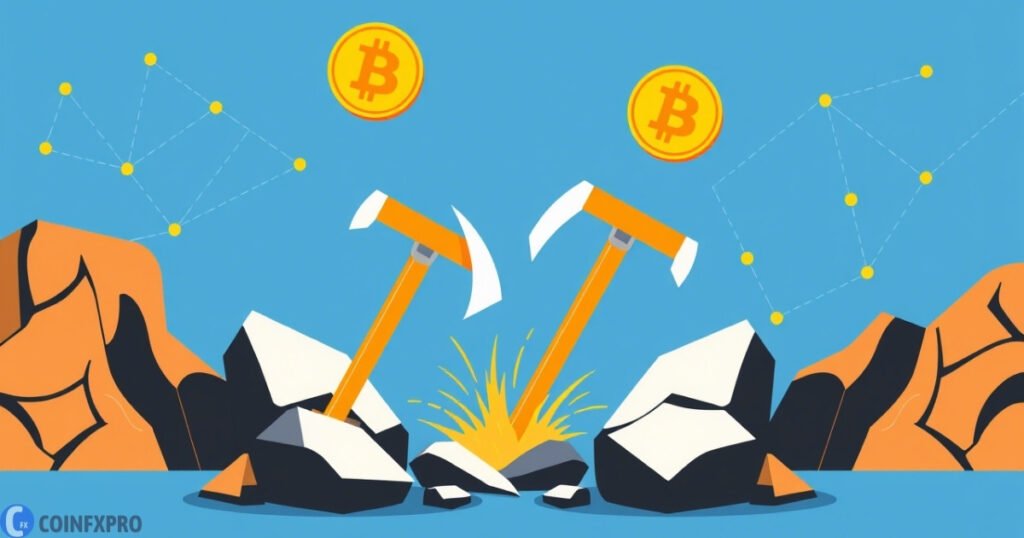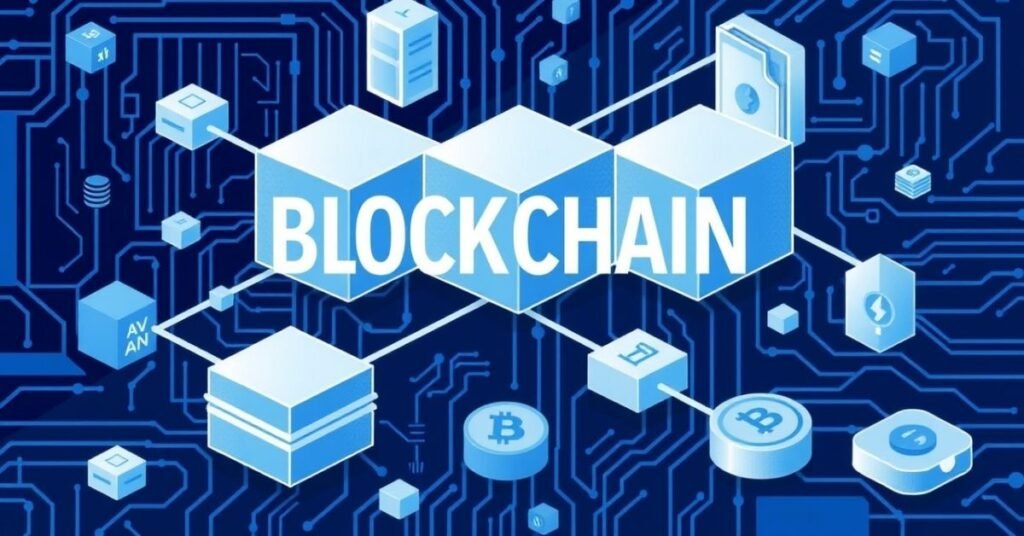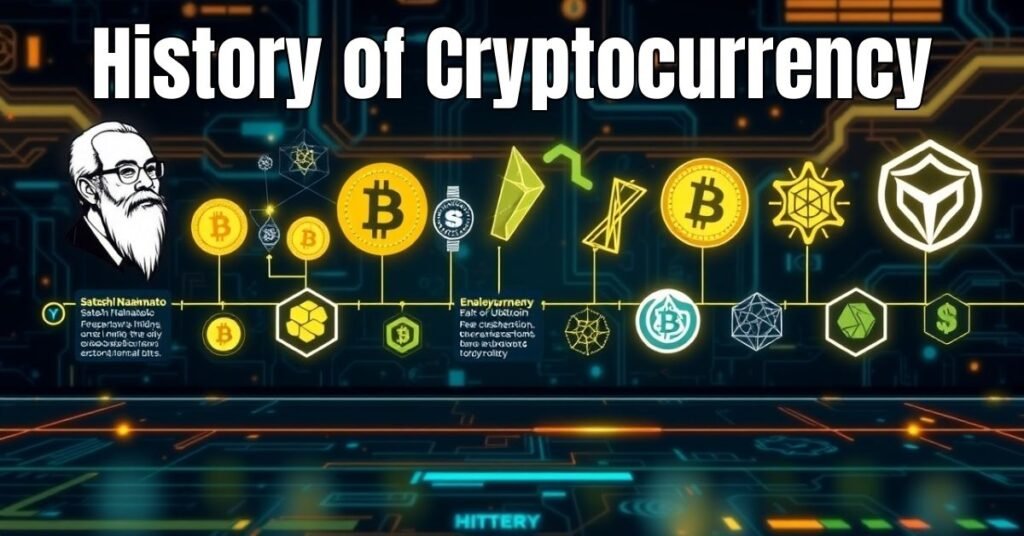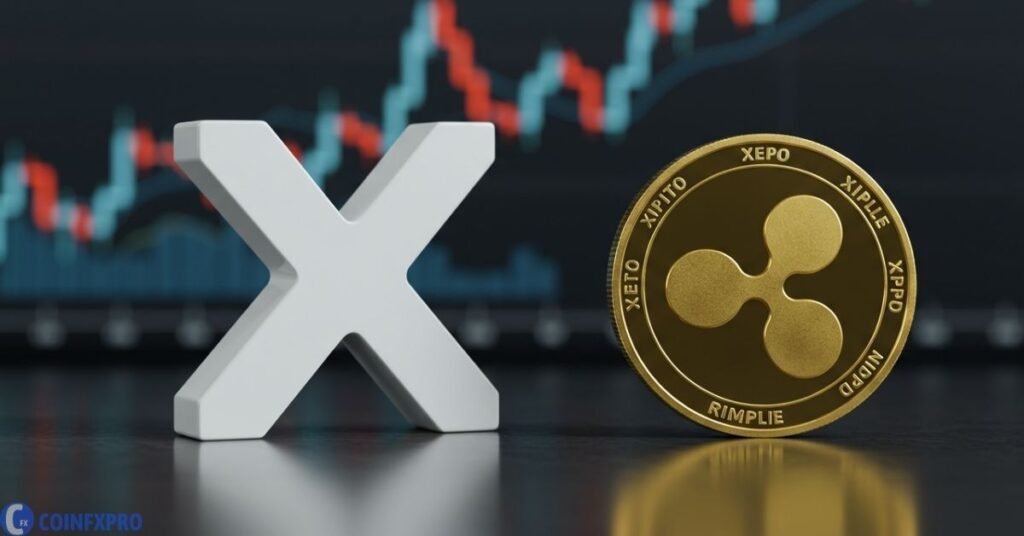Table of contents
Autonomous NFTs: Revolutionizing Digital Ownership in the Crypto World
The world of Non-Fungible Tokens (NFTs) has seen rapid evolution, shifting from simple digital collectibles to complex assets with a wide range of applications. You can learn more about NFTs and related concepts like NFT staking. While traditional NFTs offer static representations of digital items, a new concept is emerging: Autonomous NFTs (aNFTs). These dynamic assets are poised to redefine digital ownership by providing enhanced utility and interactive experiences. This article explores the concept of aNFTs, their applications within the crypto ecosystem, and why they are considered a game-changer.
What are Autonomous NFTs?
At their core, Autonomous NFTs are NFTs capable of interacting with their environment. Unlike traditional NFTs that remain static after creation, aNFTs are programmed to react to external conditions and modify themselves through smart contracts. This reactivity isn’t predefined; instead, it arises from interactions with the real world, on-chain data, and even the behaviors of other network entities. This adaptability opens up a vast array of possibilities, from dynamic art and gaming assets to sophisticated financial instruments, and more.
The Difference Between Traditional NFTs and Autonomous NFTs
Understanding the differences between traditional NFTs and aNFTs is crucial to appreciate the latter’s potential impact. Here’s a breakdown:
- Traditional NFTs:
- Static: They represent a digital item that does not change unless manually altered by the issuer.
- Limited Functionality: Their main uses are as collectibles and proof of ownership.
- Passive: They lack their own “agency” or ability to interact with external data.
- Autonomous NFTs:
- Dynamic: They can change their properties or visuals based on pre-programmed rules and real-world data.
- Enhanced Utility: They offer more than just proof of ownership, unlocking sophisticated use cases.
- Active: They can interact with smart contracts and other entities within the blockchain ecosystem, making them far more dynamic and interactive.
Think of a traditional NFT as a photograph—a static representation of a moment in time. An aNFT, conversely, is akin to a living plant that grows, changes, and responds to its environment. You can also explore the concept of xNFTs, which represent another evolution in the NFT space.
How Do aNFTs Work?
The functionality of aNFTs is primarily enabled by smart contracts. These self-executing contracts contain the logic that dictates how the aNFT reacts to specific events. These events can include on-chain activities like changes in prices, user interactions, or off-chain data feeds that bring external data on-chain. Smart contracts enable aNFTs to:
- Modify Metadata: An aNFT can change its visual appearance or other metadata based on external factors such as the weather, the user’s performance in a game, or stock market fluctuations.
- Adapt Utility: The functionality of an aNFT could be tied to real-world conditions, like access to a service or a discounted price based on specific criteria.
- Evolve Over Time: An aNFT can accumulate value or change its characteristics based on interactions within the ecosystem over time.
Applications of Autonomous NFTs in Crypto
The dynamic nature of aNFTs opens up various innovative use cases within the crypto space. Here are some of the most promising applications:
Dynamic Art and Collectibles
Imagine digital art that evolves over time, reflecting changes in the environment or even the owner’s emotional state. Autonomous NFTs can revolutionize the art world, allowing artists to create pieces that are never static but rather living digital entities.
For example, an aNFT artwork could alter its color palette in response to the weather in the artist’s current location, or its complexity could increase with every new interaction from a user. This transforms a piece of art into an experience, far more compelling than traditional, static art. In 2021, the digital art market, primarily fueled by NFTs, saw sales reach approximately $25 billion, according to a report by Art Basel and UBS. The introduction of dynamic aNFTs is expected to further enhance the value and engagement in this sector. You can also explore the NFT floor prices to understand the market dynamics.
Interactive Gaming
In gaming, aNFTs can introduce new levels of engagement and strategy. Game items can evolve based on usage, skill, or even external market conditions.
For instance, a sword NFT could become sharper with each battle it wins or a character NFT could gain new abilities based on player performance. This makes gaming more immersive and offers a new layer of personalization that keeps players engaged. According to DappRadar, the blockchain gaming industry experienced a surge in 2022, with NFT-based games accounting for over 50% of blockchain activity. The use of aNFTs is projected to further amplify this trend, providing more dynamic gameplay and player-driven economies within games. You can learn more about the metaverse coin list and its impact on gaming.
Decentralized Finance (DeFi)
aNFTs can be used to represent complex financial instruments that adapt to market conditions automatically. Think of a bond that adjusts its interest rate based on inflation or a loan that automatically adjusts its terms based on the borrower’s creditworthiness. This can create a new layer of efficiency and transparency in DeFi.
Specifically, an aNFT could represent a loan agreement. The aNFT could adjust its repayment schedule based on the borrower’s on-chain activity. If the borrower consistently stakes their assets, for example, their interest rate could reduce. The DeFi sector has grown exponentially, reaching a total value locked (TVL) of over $100 billion in 2021, according to data from DeFi Pulse. The introduction of aNFTs could potentially unlock more sophisticated financial products and further accelerate growth within the DeFi ecosystem by providing assets that react dynamically to changing conditions. To delve deeper into the DeFi space, you might find it useful to understand governance tokens.
Supply Chain Management
aNFTs can be used to track the progress of goods through the supply chain. Imagine an aNFT representing a package whose status automatically updates from “in transit” to “delivered” as it moves through different stages of the delivery process. This can enhance transparency, accountability, and efficiency in the supply chain.
This could also help ensure that a product complies with the required conditions for storage and transport. For example, a medication aNFT could display an alert if it has been exposed to temperature conditions that could compromise its efficacy. The global supply chain management market is projected to reach $26.5 billion by 2027, according to a report by Market Data Forecast. The implementation of aNFTs in supply chain tracking could enhance the efficiency and transparency of global logistics.
Real-World Asset Management
aNFTs can represent real-world assets like real estate or commodities. The aNFT can be programmed to reflect changes in value, ownership, or even the physical condition of the asset it represents. For example, an aNFT linked to a rental property could adjust the rent based on occupancy rates. The total value of global real estate assets was estimated at $326.5 trillion in 2020 by Savills, showing the immense scale of this market. The ability of aNFTs to dynamically adjust and represent real-world assets could improve the efficiency and transparency of real estate investments and management.

Advantages of Autonomous NFTs
The transition from static to dynamic digital assets using aNFTs brings several compelling advantages:
- Enhanced Engagement: aNFTs encourage users to interact and be part of a dynamic ecosystem that goes beyond mere ownership.
- Increased Utility: aNFTs can offer more sophisticated functionalities, making them more practical and valuable than static NFTs.
- Personalization: aNFTs can be personalized to reflect users’ preferences and actions.
- Adaptability: aNFTs can automatically adjust to external changes, making them more relevant and robust.
- Transparency: The underlying logic of aNFTs is encoded within smart contracts, which enhances trust and transparency.
Challenges and Considerations
Despite the tremendous potential of aNFTs, some challenges and considerations need attention:
- Complexity: The development and maintenance of aNFTs can be more complex than static NFTs, as they require programming via smart contracts and external data feeds.
- Security: The dynamic nature of aNFTs could introduce new security vulnerabilities. Smart contracts must be thoroughly audited to mitigate potential risks.
- Scalability: As the ecosystem develops, ensuring that the network can handle the computation required by increasingly complex aNFTs will be important.
- Standardization: Standardization efforts are needed to ensure that aNFTs are interoperable across different platforms.
The Future of Autonomous NFTs
The evolution of aNFTs is just beginning. As blockchain technology matures and becomes more widely adopted, we can expect a surge in sophisticated use cases. The integration of artificial intelligence and machine learning with aNFTs could usher in an era of even more intelligent and dynamic assets. You might also be interested in exploring AI wallets, as they are becoming increasingly relevant in the crypto space.
According to a recent report by NonFungible.com, in 2024, the NFT market saw over $2.1 billion in sales. Although aNFTs represent a small fraction of this currently, their inherent capability to provide dynamic utility is expected to significantly grow this portion of the market over the next few years, becoming a substantial force in the digital economy. A report by McKinsey & Company estimates that the metaverse, where aNFTs are likely to be heavily utilized, could reach a value of $5 trillion by 2030. This underscores the potential for aNFTs to become a central component of the digital economy.
The promise of more interactive, dynamic, and personalized digital assets is likely to make aNFTs central to the future of digital ownership and interaction.
Conclusion
Autonomous NFTs are more than just a novelty; they represent a fundamental evolution in how we interact with digital assets. They introduce a layer of dynamism that creates an engaging experience for users, and allow creators to explore complex use cases previously considered impossible with traditional NFTs. As technology advances, aNFTs are set to become an integral part of the crypto space, transforming how we engage with the digital world. Understanding aNFTs is essential for anyone navigating the future of crypto and digital ownership.
Frequently Asked Questions (FAQ)
What are Autonomous NFTs?
Autonomous NFTs (aNFTs) are a revolutionary type of digital asset. Unlike static NFTs, aNFTs are dynamic and interactive, capable of changing their characteristics based on external data sources or user interactions. This opens up exciting possibilities in various sectors.
How do Autonomous NFTs work?
Autonomous NFTs leverage the power of smart contracts. These contracts allow them to interact with external data feeds and respond to user actions. The metadata, utility, or even the value of an aNFT can change dynamically, creating highly personalized and engaging user experiences.
What are the applications of Autonomous NFTs?
Autonomous NFTs have vast potential across numerous industries. They can be used for dynamic digital art, interactive in-game items, evolving DeFi instruments, transparent supply chain tracking, and even managing real-world assets with greater flexibility and efficiency than traditional static NFTs.
What advantages do Autonomous NFTs offer?
Autonomous NFTs offer significant advantages: increased utility, user personalization, adaptability to changing conditions, and enhanced engagement. Their dynamic capabilities and integration with smart contracts provide transparency and enable a wide range of innovative applications, distinct from regular NFTs.
What challenges do Autonomous NFTs face?
Despite their potential, Autonomous NFTs face hurdles. These include increased development complexity, the need to address potential security vulnerabilities in their smart contracts, ensuring scalability for widespread adoption, and establishing industry standards for cross-platform compatibility.

